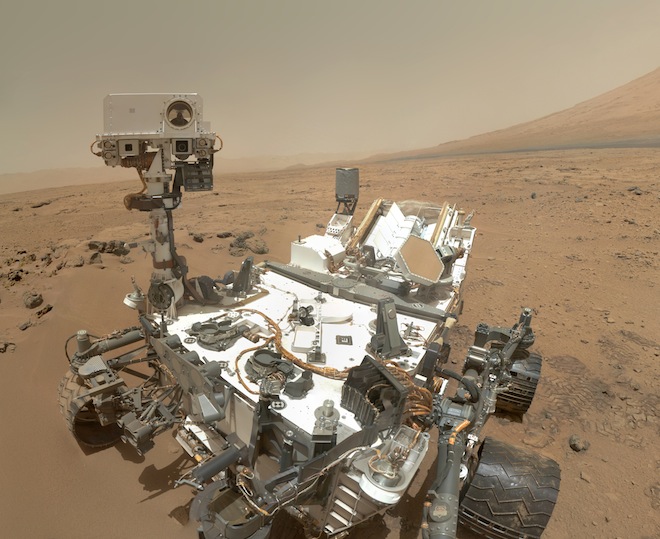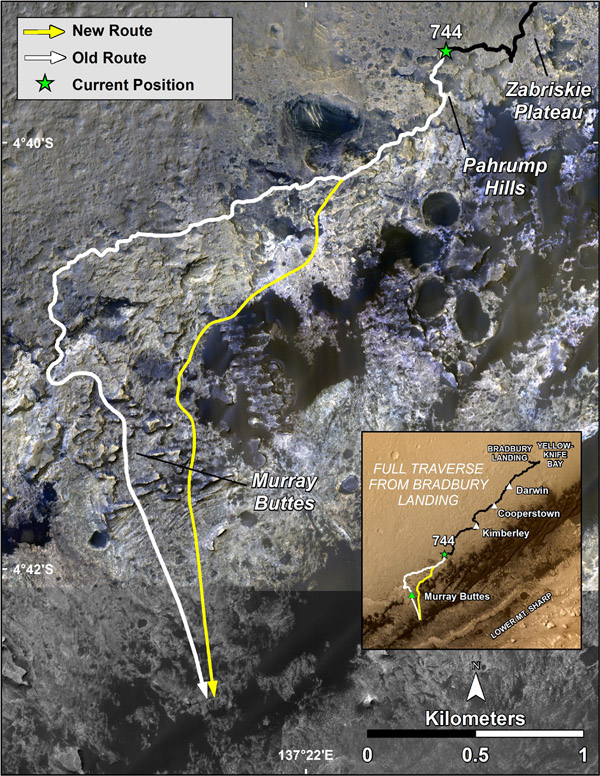Curiosity rover arrives at the main goal of its mission - Mount Sharp

This selfie was taken by the rover long before arriving at the destination of its journey, we are waiting for new photos from NASA
. Everything is going well on Mars, and the Curiosity rover reached the main goal of its mission - Mount Sharp, in the very center of Gale Crater. Already, preparations are underway for drilling in this region. The fact that the rover finally arrived where scientists really wanted to see him, NASA reported .
At the first stage of the study of the mountain, the rover will take soil samples from the region at the lower slope of the mountain, it will not be very difficult to do this. The study of the rocks of Mount Sharp, according to scientists, will help to better understand the geological structure of Mars, as well as get more information about the conditions that prevailed on the Red Planet many millions of years ago. Mount Sharp (or Mount Aeolide) is the center of Gale's impact crater, and rises 5.5 kilometers above the surface of Mars.
It is worth noting that earlier the path of the rover should have been a little different, but earlier the scientists decided to change it, because too many sharp stones and ledges came across the chosen path, which caused severe damage to the rover wheels. After that, Curiosity was sent to the mountain along a different path, lying among the sand dunes (as mentioned earlier, Martian sand is not sand in the full sense of the word, but rather dust). It was also decided to slightly change the route along Mount Sharp.

Now everything is in order with the rover, and, as mentioned above, scientists are preparing to drill rocks (by the way, not so long ago, a special NASA commission demanded that the rover team drill more and ride less). Curiosity will begin its work by exposing rocks called the Parampa Hills. According to experts, this place will help to understand the geological structure of the block, which is a significant part of the Sharp mountain. Previously, scientists planned to start the study from the Murray Uplands (“Murray Buttes”), but after a while it was decided to direct the rover to the Parampa hills, which are a more interesting formation for geologists than the “Murray Buttes”. New work will begin as early as next week, and we can only wait for the results.
